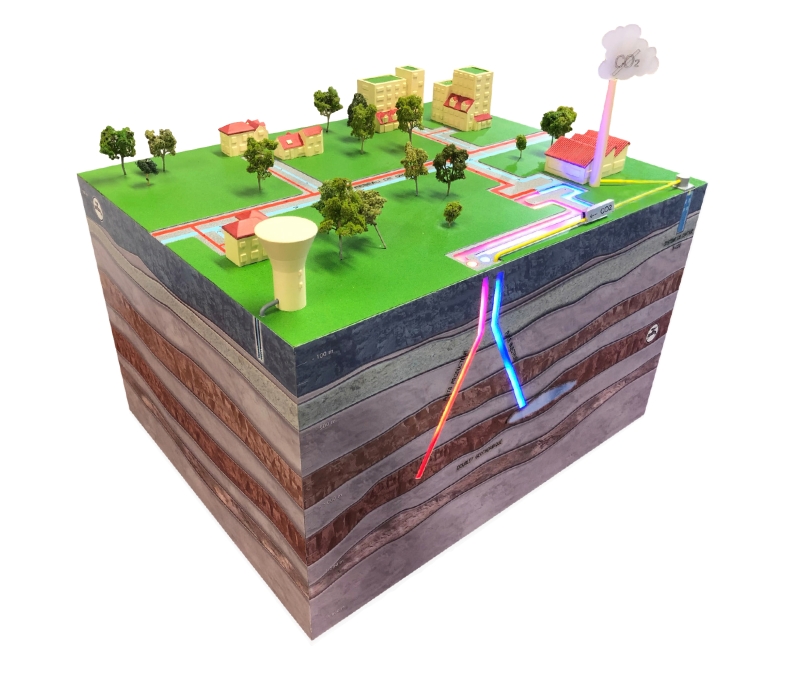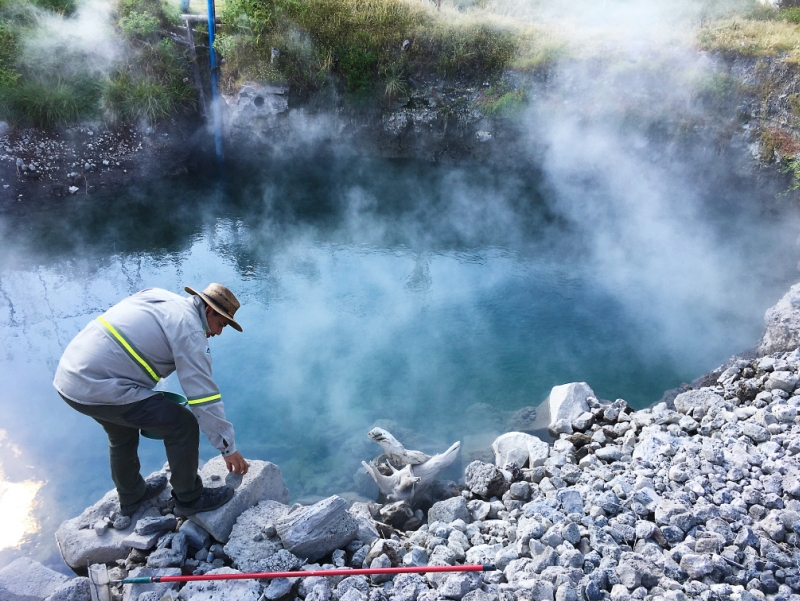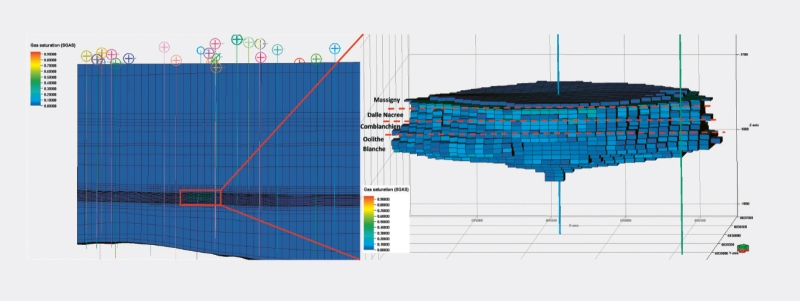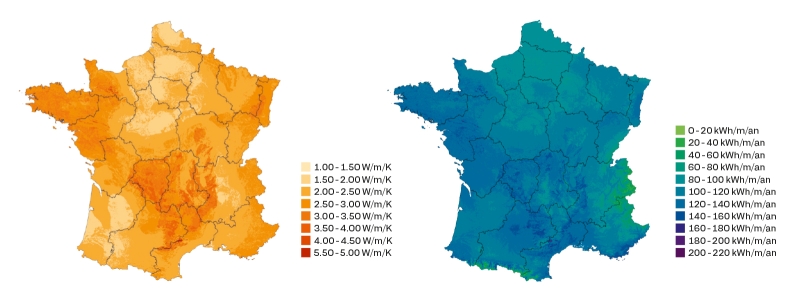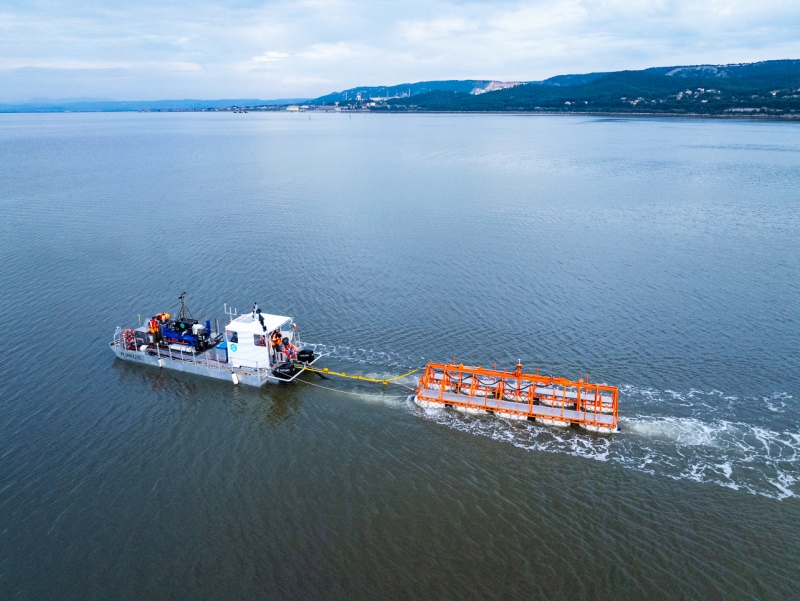Detailed in the concept review produced by BRGM, CO2-DISSOLVED involves exploiting a geothermal doublet by simultaneously storing CO2 in dissolved form in the injected brine. © BRGM
Subsurface energy and decarbonisation
In brief
Comparative study - Hybridization between geothermal energy and CO2 capture and storage
The number of hybrid concepts integrating both geothermal energy production and CO2 capture and storage described in the literature has increased considerably in recent years. A BRGM study carried out on behalf of the IEAGHG, an International Energy Agency R&D programme on greenhouse gases, has identified fifteen of them. These are presented in detail and their performance compared, thus providing a valuable resource for researchers, policy-makers and industry and energy professionals. This work was the subject of an article in a scientific journal.
Mexico: what potential for lithium extraction from geothermal waters?
BRGM is supporting Mexico in its energy transition through a study of geothermal lithium, financed by the French Development Agency (AFD). This project is being carried out in partnership with the Comisión Federal de Electricidad, the only company in Mexico to use geothermal energy to generate electricity. The data acquired and that from the literature have made it possible to draw up an initial atlas of the geothermal waters that are the richest in lithium and to quantify this element in the brine deposits in the retention basins of the Cerro Prieto geothermal power plant, one of the largest in the world.
Water sampling at a thermal spring in Ixtlán de Los Hervores, Michoacán. © BRGM
PilotSTRATEGY to accelerate the deployment of CO2 storage
Launched in 2021, the European PilotSTRATEGY project (H2020) aims to study potential sites for geological storage of CO2 in aquifers in France (Paris Basin), Spain, Portugal, Greece and Poland. Carried out by a consortium of 16 partners from 7 countries coordinated by BRGM, the research has made it possible to characterise the reservoirs in detail, in particular by acquiring new geological and seismic data, and to simulate their behaviour in relation to CO2 injection, using numerical models. The current phase consists in carrying out feasibility studies and preparing pre-project documents for the implementation of CO2 storage pilots in promising regions. PilotSTRATEGY is also developing a societal approach by integrating consultation with stakeholders in each region.
In the Paris Basin, the PilotSTRATEGY project has simulated the extent of the CO2 plume in the Dogger aquifer after ten years of injection. © BRGM
Geothermal energy: characterisation of the national potential for vertical probes
As part of the national plan to deploy geothermal energy, BRGM has mapped the suitability of the subsurface in mainland France for vertical probes. The aim is to help France Rénov’ advisors and local authorities make an initial assessment of the relevance of the solution. The company has developed a methodology for using available data to assess the values of key subsurface parameters for sizing geothermal probes. For each depth (50m, 100m, 150m, 200m), maps were produced showing the thermal conductivity of the subsurface, its temperature and the extractable energy in relation to the length of the probe (for heating only). They are available on-line at geothermies.fr.
Left: map of the thermal conductivity of ground over a depth of 100 metres.
Right: map of extractable energy per metre of probes 100 metres deep.
© BRGM – DGEC
CO2GeoNet and BRGM at the Industrial Carbon Management forum
France hosted the 4th Industrial Carbon Management (ICM) forum on carbon capture, storage and recovery in Pau on 10 and 11 October 2024. BRGM and CO2GeoNet, the European scientific network on the geological storage of CO2, organised a workshop to assess how research and innovation can help accelerate the deployment of this technology, both at European level and locally. Some sixty participants were able to discuss with the experts and share their ideas. The recommendations resulting from these discussions were submitted to the European Commission.
Exploring deep geothermal resources
Two seismic reflection campaigns were carried out in 2024 in the Île-de-France region and in the Arc basin, between Aix-en-Provence and Fos-sur-Mer, as part of the Géoscan programmes to explore deep geothermal resources in these regions, undertaken by Ademe, BRGM and the local authorities concerned. Vibrator lorries travelled the roads at night and a barge cruised on the Etang de Berre during the day. In addition, geological fieldwork was carried out in the Arc basin. The data collected were analysed and interpreted in conjunction with other geoscientific data, in order to improve our knowledge of aquifers down to a depth of almost 3,000 metres and thus define areas suitable for exploiting deep geothermal energy.
The seismic reflection campaign on the Arc basin was carried out between 21 October and 20 November 2024, on roads as well as on the Etang de Berre. © S3 Robert-Famy




